MARIANI’S
Virtual
Gourmet
August
30 , 2020
NEWSLETTER
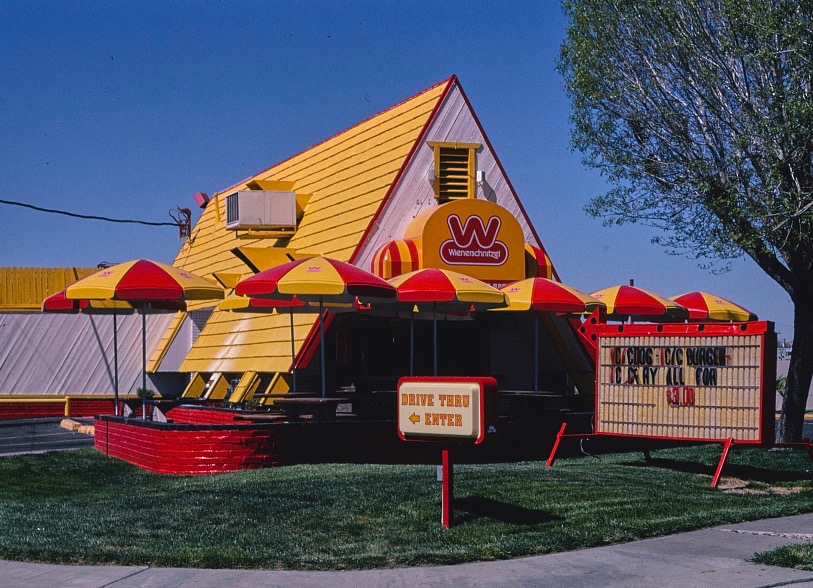
Wienerschnitzel Drive-Thru, Albuquerque, NM
❖❖❖
IN THIS ISSUE
L'ESCALE, GREENWICH, CT, IS WHAT
THE FUTURE OF FINE DINING WILL BE
By John Mariani
NEW YORK CORNER
LOVE AND PIZZA
CHAPTER TWENTY-THREE
By John Mariani
NOTES FROM THE WINE CELLAR
5 REASONS NOT TO AGE A WINE YOU JUST BOUGHT
By John Mariani
❖❖❖
L'ESCALE, GREENWICH, CT, IS
WHAT
THE FUTURE OF FINE DINING WILL BE
By
John Mariani
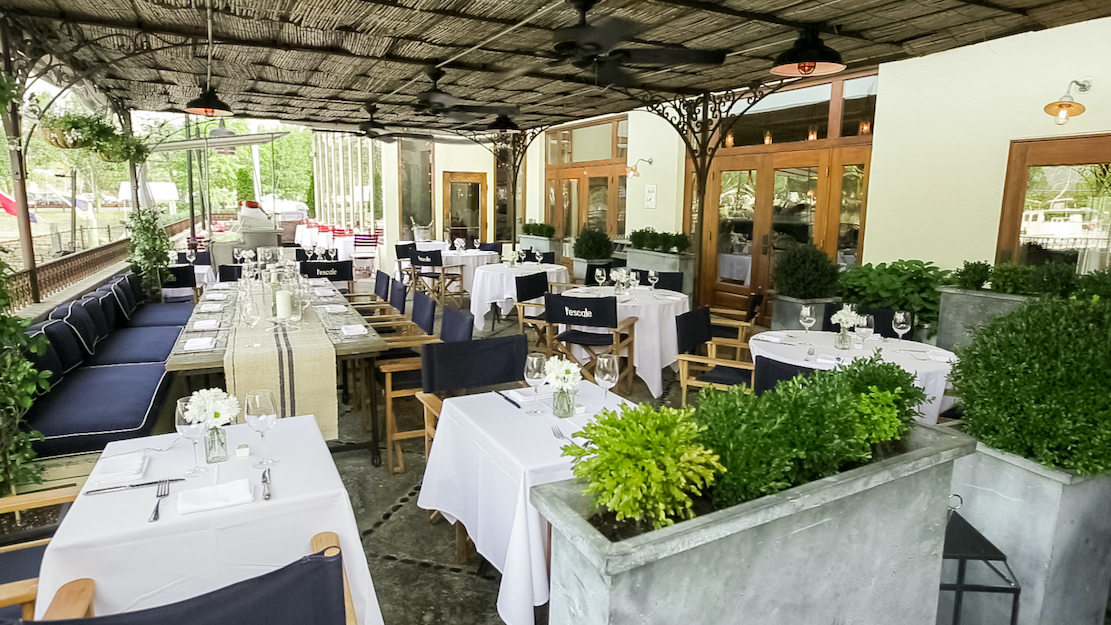
I’m
already on record
as insisting that not only will restaurants
rebound after the coronavirus
pandemic ends but that they will thrive, albeit in
new forms. Historically,
they always have, and while some entrenched
concepts—restaurants
with 500 seats, German rathskellers, Jewish
delis, cafeterias—have dwindled, other kinds of
restaurants—from upscale
counter and sushi bars to storefront Mexican
eateries, not to mention
restaurants that have found outdoor dining and
delivery—will add measurably
when the pandemic passes.
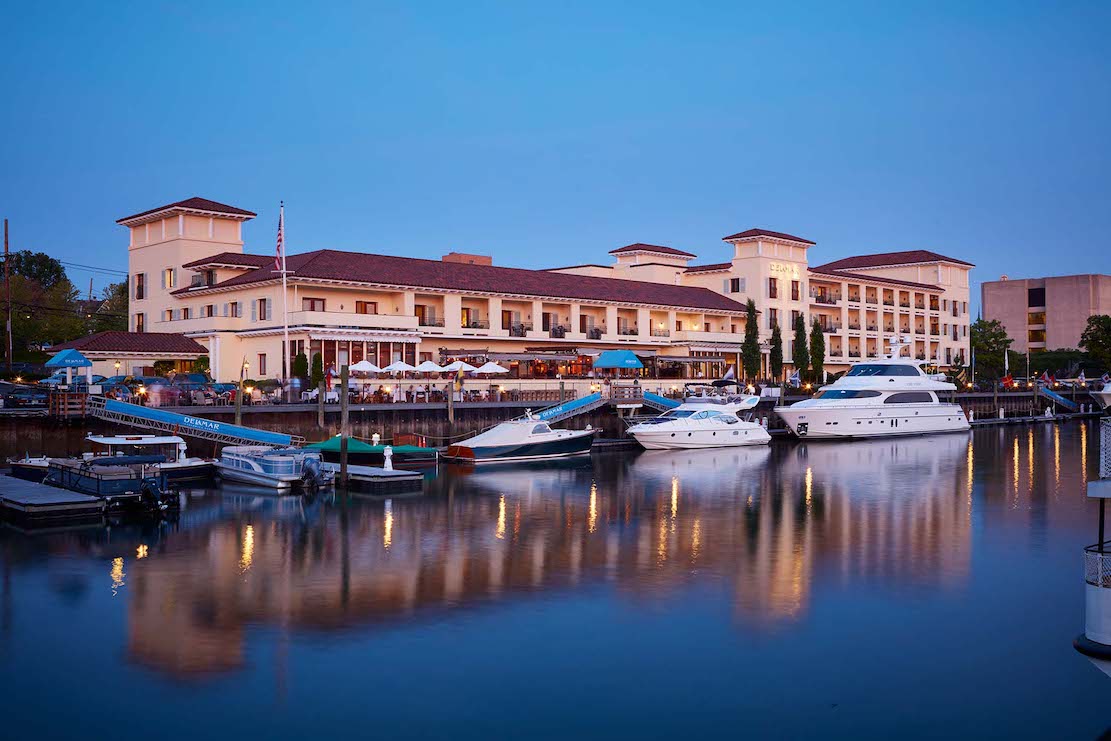 If I have any real concern
about a
restaurant genre that would have a difficult time
coming back, it would be
those serving 20-course tastings menus, modernist
laboratories with dishes most
people don’t ever care to eat again, and the very
high-end restaurants catering
mostly to a tourist and expense account crowd.
Post-Covid, it’s going to be
tough to approve the expenditure of $500 per person
at a time when the economy
remains shaky for some time to come.
If I have any real concern
about a
restaurant genre that would have a difficult time
coming back, it would be
those serving 20-course tastings menus, modernist
laboratories with dishes most
people don’t ever care to eat again, and the very
high-end restaurants catering
mostly to a tourist and expense account crowd.
Post-Covid, it’s going to be
tough to approve the expenditure of $500 per person
at a time when the economy
remains shaky for some time to come.
Still, fine dining will come back
strong, if in a slightly altered style. Long before
the coronavirus scare, fine
dining rooms had already loosened up, become more
casual and dropped any
pretense of snobbism. Prices have certainly
stabilized, or dropped, in an
effort to attract business. But the cherished
rubrics of fine dining are not
going to change, and master chefs are not going to
start cutting corners.
An excellent case in point is l’escale
(they use all lower case letters for some reason) in
Greenwich, Conn., which
veteran restaurateur Rick Wahlstedt opened on a
marina in 2003 to immediate
success as a French restaurant whose Provençal décor
appealed to the affluent
patrons of the so-called Gold Coast of Connecticut,
while drawing an equally
well-off clientele from adjacent Westchester County
and, on weekends,
Manhattan. Just off the New England Thruway and
blocks from the New Haven line
train station, it has served as a commuter’s oasis
of calm on the water, with a
casually elegant dining room with fireplace and a
thatched-roof outdoor
terrace. It’s also one of the most popular wedding
reception spaces within
fifty miles.
Executive chef Fréderic Kieffer has
been there from the beginning, and his cooking has
always been a ménage of
French and American culinary traditions, 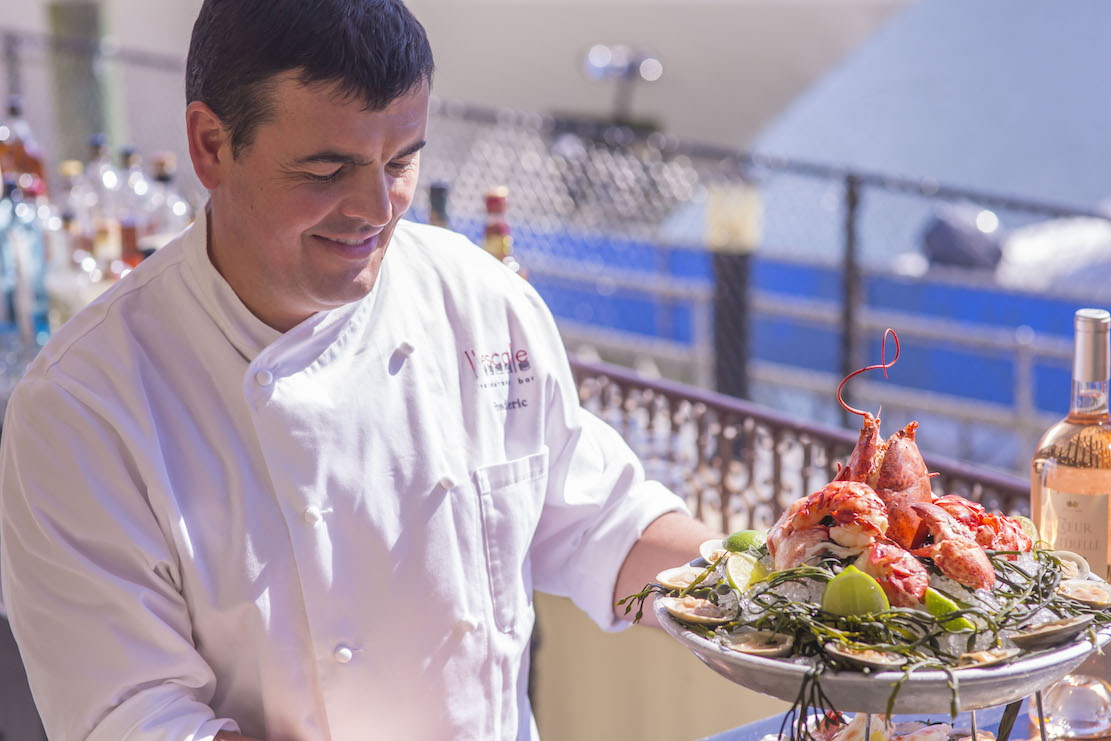 offering some dishes that one might
find at a posh New York French restaurant like Le
Bernardin or Daniel as well
bison ribeye steaks and freshly baked cookies. The
500-label wine list,
overseen by manager David Fletcher, is one of the
finest in the Tri-State region
and, while not cheap, includes many bottles at $50
or under.
offering some dishes that one might
find at a posh New York French restaurant like Le
Bernardin or Daniel as well
bison ribeye steaks and freshly baked cookies. The
500-label wine list,
overseen by manager David Fletcher, is one of the
finest in the Tri-State region
and, while not cheap, includes many bottles at $50
or under.
So, all was going well for seventeen
years until the pandemic struck in March. Wedding
reception and banquet
reservations were decimated (although next year’s
openings are already
completely booked). In stages, the state of
Connecticut allowed restaurants to
do take-out and delivery, then outdoor dining, and,
recently, indoor dining.
Tables are six feet apart; face masks must be worn
by everyone entering the
premises; the staff’s temperature is taken daily
before work; the staff must
wear masks and gloves; they have added a bathroom
attendant; and 50% occupancy
must be maintained.
All
that is to the good and practiced
by restaurants and eateries around the state, but on
a summer’s evening at e’escale,
overlooking the marina’s flotilla of yachts, the
inevitable comparison to being
on the French Riviera occurs to everyone. All the
amenities are maintained:
white tablecloths and napkins, and candles are
brought out at twilight;
captains are in suits and the young waitstaff in
crisp navy blue polo shirts
and white pants; menus, printed on a single page,
are discarded after use;
wineglasses (except for the odd, thick-lipped
Champagne flutes) are of good
quality; the baguettes, from Balthazar bakery, are
irresistible, and the butter
is at the right temperature.
 Indeed,
you would think that, except
for the ubiquitous masks, nothing has really
changed, and in its ambience and
menu, l’escale manifests what I think the future of
fine dining will look like
in America. Its beauty is easy enough to love—it’s
very romantic, and women
like dressing the part—and the staff is easy to get
to know quickly, with
everyone bending over backwards to make guests
happy. There’s little on the
menu that is wholly novel, but everything is backed
up by Kieffer’s long
experience and that of his sous-chef, Angus McLeod.
Indeed,
you would think that, except
for the ubiquitous masks, nothing has really
changed, and in its ambience and
menu, l’escale manifests what I think the future of
fine dining will look like
in America. Its beauty is easy enough to love—it’s
very romantic, and women
like dressing the part—and the staff is easy to get
to know quickly, with
everyone bending over backwards to make guests
happy. There’s little on the
menu that is wholly novel, but everything is backed
up by Kieffer’s long
experience and that of his sous-chef, Angus McLeod.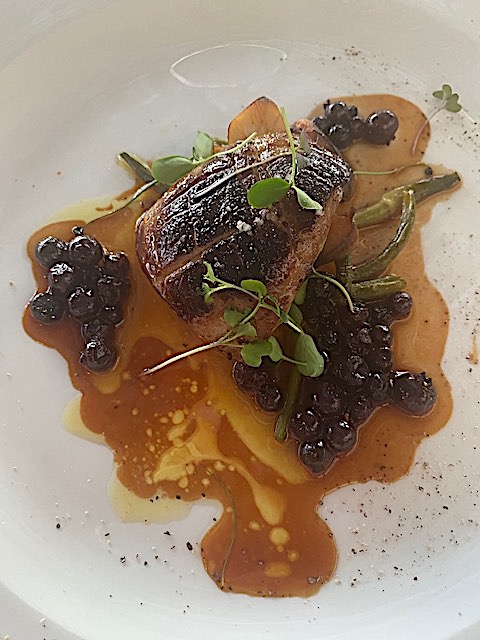
You may begin with thinly sliced raw
scallops (left)
on a wafer of avocado with citrus, olive oil and
dots of jalapeño ($18)
or a dégustation of nine oysters, nine clams,
six shrimp and a seafood ceviche with brandied
cocktail sauce and mignonette
($105). Chilled Andalusian gazpacho with avocado,
sunflower seeds and croutons
($16) is perfect for a summer starter, and, this
being New England, there’s
good reason for the menu to include plump lobster
sliders on grilled brioche
with sauce americaine
($24), along
with juicy beef sliders with pungent blue cheese and
pickled shallots ($16).
Tuna tartare, subtly seasoned with avocado, English
peas, radish stracciatella
cheese, sorrel and mint ($24) radiates the spirit of
late August.
I cast a questioning eye on French
chefs who make pasta, not because their rendering
may not be very Italian—it
rarely is—but because they
are so often overwrought
with too many ingredients. Not so l’escale’s: The
homemade cavatelli with black
Chilean truffles and chanterelles ($16/32;
supplement for truffles $25) is a
superb pasta, as is another with wild mushrooms,
favas, and a sage-pine nut pesto
($16/$28). Lightly seared fresh
foie gras (right)
from the Hudson Valley comes with nebrodini
mushrooms, a touch of
garlic scapes, and lovely blueberry sauce ($21).
 There is, of course, a
classic steak au
poivre with green peppercorns ($55),
and the French fries are terrific, with a lot of
potato flavor. A fine piece of
halibut came in a bath of bouillabaisse ($42) that
really needed a more intense
infusion of saffron, garlic, fennel and a rouille.
The quality of first-rate
ingredients again comes into focus with wonderful
Florida grouper with Okinawa
potato, chanterelles and roasted pepper vierge
($42).
There is, of course, a
classic steak au
poivre with green peppercorns ($55),
and the French fries are terrific, with a lot of
potato flavor. A fine piece of
halibut came in a bath of bouillabaisse ($42) that
really needed a more intense
infusion of saffron, garlic, fennel and a rouille.
The quality of first-rate
ingredients again comes into focus with wonderful
Florida grouper with Okinawa
potato, chanterelles and roasted pepper vierge
($42).
Everyone orders desserts at l’escale,
many dependent
on the fruits of the season—a peach tart is
currently the star, with vanilla
ice cream ($14), and the crème brûlée with a butter
crunch cookie is a luscious
balance of creaminess, sweetness and brittle crust
($14). The plate of cookies
($11) are warm and chewy.
There are daily two- and three-course
prix fixe menus at lunch and dinner, but they’re so
weighted with
supplements—three out of seven dishes—as to seem
ingenuous.
This
is unquestionably dining at a very
high level, and without pretense. It has a menu that
has plenty of options for
everyone without sloughing into trend outcroppings
like Korean dumplings or
Texas chili. It’s the kind of cuisine, served with
deft friendliness in a
gorgeous setting, that assures me that
this is the future of fine dining in a
post-pandemic America.
❖❖❖
By John Mariani
LOVE AND PIZZA
Since, for the time being, I am unable to write about or review New York City restaurants, I have decided instead to print a serialized version of my (unpublished) novel Love and Pizza, which takes place in New York and Italy and involves a young, beautiful Bronx woman named Nicola Santini from an Italian family impassioned about food. As the story goes on, Nicola, who is a student at Columbia University, struggles to maintain her roots while seeing a future that could lead her far from them—a future that involves a career and a love affair that would change her life forever. So, while New York’s restaurants remain closed, I will run a chapter of the Love and Pizza each week until the crisis is over. Afterwards I shall be offering the entire book digitally. I hope you like the idea and even more that you will love Nicola, her family and her friends. I’d love to know what you think. Contact me at loveandpizza123@gmail.com
—John Mariani
To read previous chapters go to archive (beginning with March 29, 2020, issue.
LOVE AND PIZZA
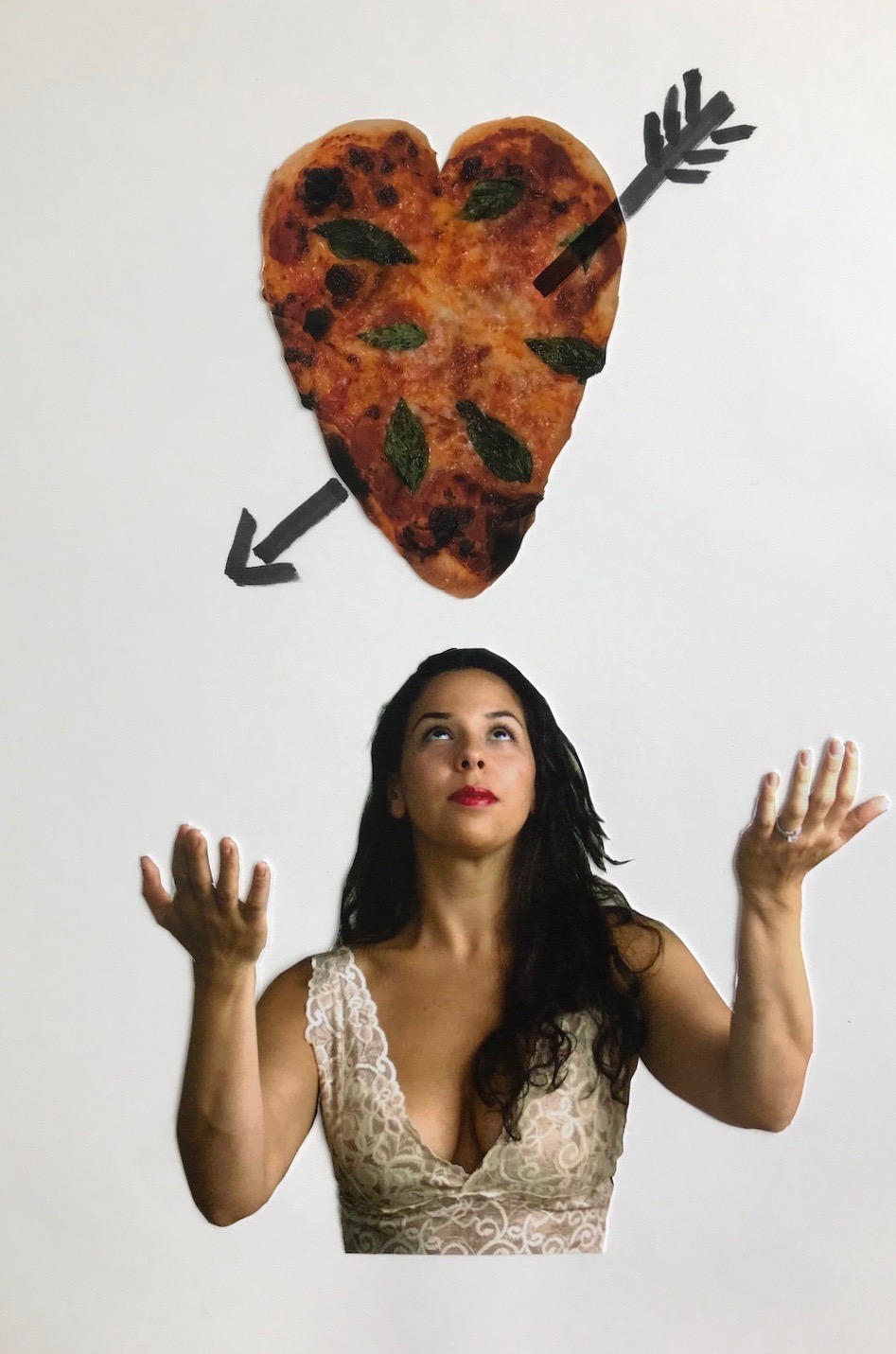
By John Mariani
Cover Art By Galina Dargery
CHAPTER TWENTY-THREE
It was a bit
brisk but sunny on Saturday, and at the
appointed time of two o’clock—more or
less—Giancarlo rang the bell of the dorm. Nicola,
dressed in her best jeans, with a slouching
turtleneck and a black leather jacket, didn’t
wait for the elevator but bounced down the
stairs and out the door. From
above, her girlfriends were looking out the
window.
Giancarlo, dressed in blue jeans, a
button-down shirt with a pencil stripe, and a
superbly cut chocolate brown cashmere blazer,
smiled and said, “Ciao, Nicola”—he hadn’t yet called
her “bella”—and
gave her three kisses of greeting, which she
warmly returned.
“That’s a beautiful blazer,” she told him.
“Is it Armani?”
“No,” said Giancarlo, “I’m afraid I’m a
little more conservative. I have my clothes made
by a tailor in Torino,” then, hoping to sound
frugal, added, “They last forever.”
 “By the
way, I’ve been meaning to ask you,” said Nicola.
“I notice you always wear American-style
button-down Oxford shirts rather than a straight
Italian collar.”
“By the
way, I’ve been meaning to ask you,” said Nicola.
“I notice you always wear American-style
button-down Oxford shirts rather than a straight
Italian collar.”
Giancarlo laughed and said, “Ah, si, it’s
kind of an affectation of mine. When I
was at Yale, which is, as you know, very Ivy
League, I liked this comfortable American look of
the button down shirt—very soft, not stiff. Everybody
seemed to buy them at Brooks Brothers in New York,
so every once in a while when I was in New York,
I’d buy a bunch of them. And they
really do last forever! This one
I’m wearing must be from my freshman year.”
“I love them. And you know Gianni Agnelli (left) wears
button down shirts, too,”Nicola said, speaking of
the immensely wealthy titan of Fiat.
“Ah,
yes, he does” said Giancarlo. “That’s his own
affectation. But he always wears the collars
unbuttoned, just to make it seem like he’s a very
casual man, but it’s all very calculated.”
“Does your family know him?”
“Oh, for ages. He and my father are about
the same age, and they’ve been business associates
since after the war.
Sometimes we socialize.”
Nicola was almost sorry she asked. She was
already feeling out of her depth and anxious about
the prospect, however remote, of moving within the
Cavallacci’s social circle.
In telling her girlfriends the night before
of her dinner with the marchese, Nicola revealed
there were moments when she felt this relationship
was not on an equal playing field. Try as she
might, she was never going to make the Bronx sound
in any way as intriguing to Giancarlo as Piemonte
was to her, and, try as she did to soften her
reactions to his family narrative and lifestyle,
they were too often in the embarrassing nature of
“Wow!”
On an intellectual level, however, Nicola
Santini felt quite equal and, from the kind of
conversations they had over dinner, she knew
Giancarlo clearly found her simpatico
and respected her for her broad knowledge of
Italian art, culture and food (if not wine). Where
things would—or could—progress,
that she
didn’t really know.
Catherine,
of course, had told her not to think about it and
just to enjoy herself, saying, “Nicky, how many
girls you know will ever have a story this good to
tell back home? Even among my friends in New York,
I only know one who ever married an aristocrat,
but he was some boring older guy from Russia who
didn't have a dime.”
guy from Russia who
didn't have a dime.”
Nicola decided Catherine was right and was
determined to absorb as much elation and joy from
her time with Giancarlo as she could. More
than once she mumbled to herself, “Carpe diem”
and “When in Milan ...” And it
took her mind off anything to do with modeling.
The Museo was very close, so they walked
over, arm in arm the way all Italians do with
friends, and entered what had been the 17th
century Palazzo Dugnani, whose Salone d’Onore’s
18th century frescoes (above) were painted by
Giambattista Tiepolo. The
building became home to the cinema museum in 1947
and housed a considerable collection of
memorabilia and experimental movie equipment along
with a trove of films, largely Italian, many of
them set in Milan.
They
passed through the dark hallways lighted for
effect, perused the historic exhibits of early
cinema pioneers, and admired the movie posters
displayed, including those from the post-war
Neo-Realism films of Vittorio de Sica and Roberto
Rossellini; the so-called “Pec-taculars” about
beefy mythic heroes like Hercules and Maciste
(usually starring American bodybuilders); the
internationally renowned “art” films of Federico
Fellini, like 8
1/2, Michelangelo Antonioni, like L'Eclisse (left),
and Pier Paolo Pasolini, like The Gospel According
to St. Matthew; the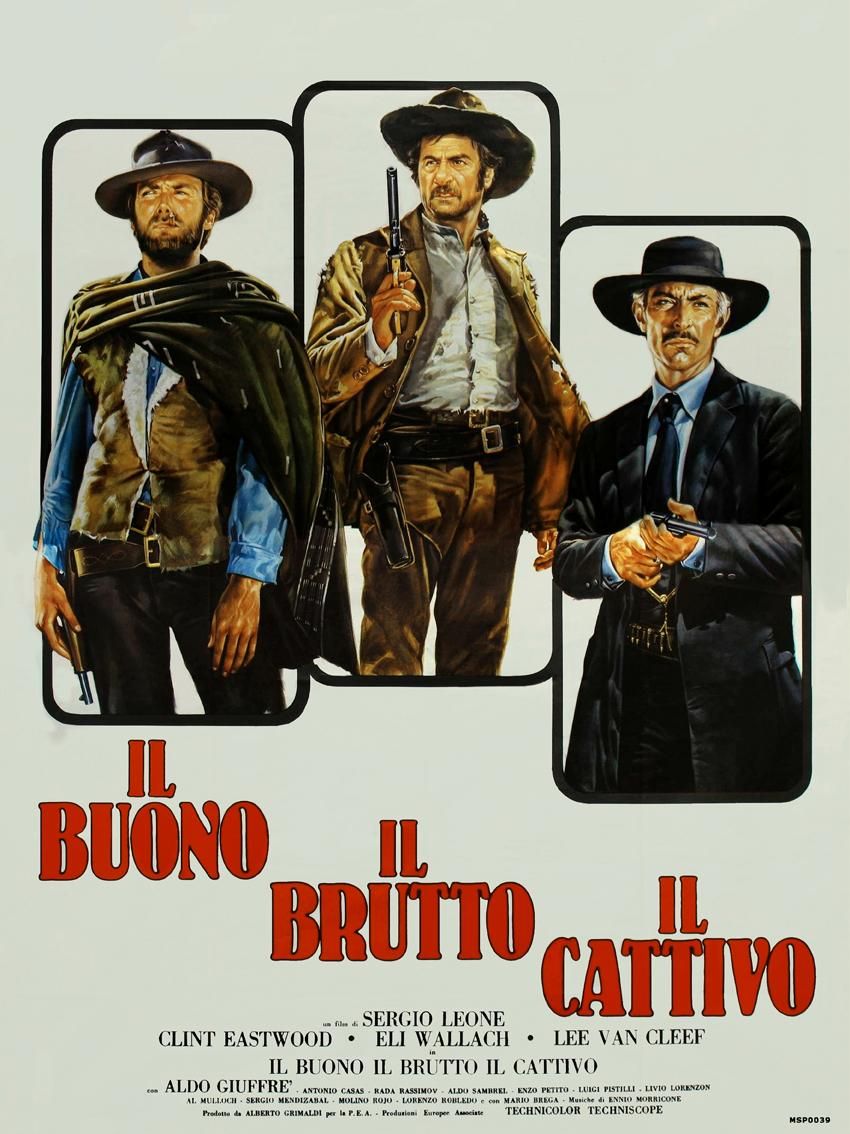 “spaghetti westerns” of Sergio Leone, and the
cheap romantic farces that followed in the 1970s.
“spaghetti westerns” of Sergio Leone, and the
cheap romantic farces that followed in the 1970s.
There
were posters for movies starring the actresses Signora
Palma had used in her show, not least a few of
Claudia Cardinale’s early films, including “Big
Deal on Madonna Street” and “Rocco and His
Brothers.”
“Did you know she was born in Tunisia?”
asked Giancarlo.
Indeed, Nicola had made it a point to find
out what she could about the actress she would be
made up to look like for Signora
Palma’s show.
“Yes, in Tunis. Her mother was Tunisian and
her father Sicilian, from Trapani. Do you know
she didn't speak a word of Italian until she
started making movies here?” Then
Nicola dropped the subject, not wanting to
maintain the folly of her association with a movie
goddess.
After touring the museum, it was six
o’clock—still early for dinner— and although she’d
missed lunch and was starving, Nicola did not want
Giancarlo to think she was crassly American enough
to eat at such an early hour.
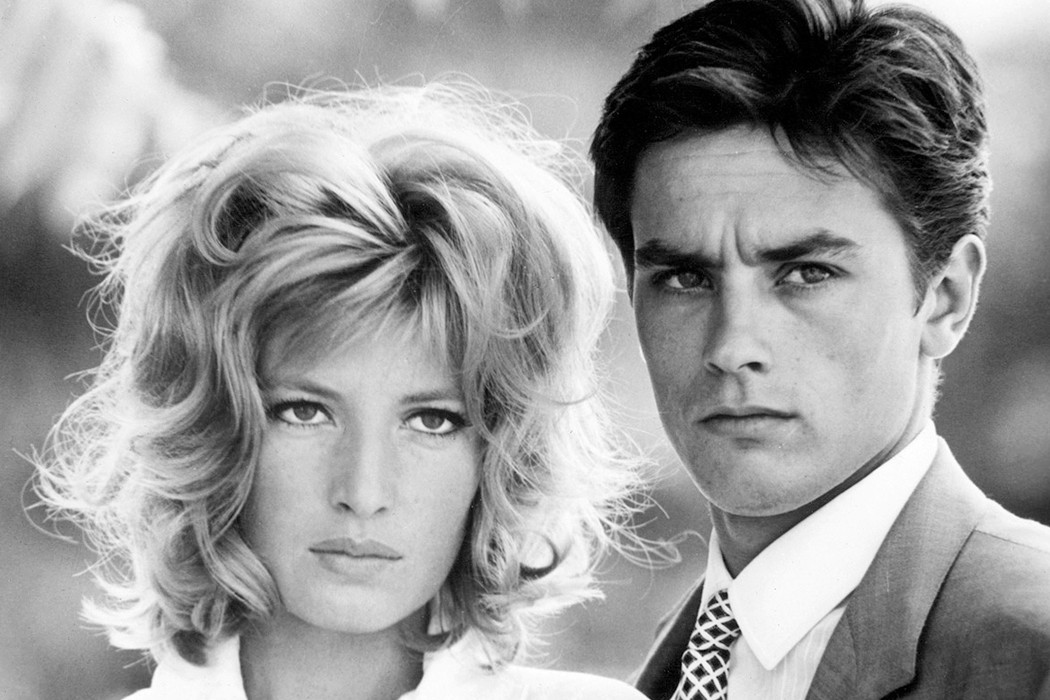 Then,
Giancarlo spoke up. “Nicola, I have to tell you, I
didn't have lunch today and I’m starving.”
Then,
Giancarlo spoke up. “Nicola, I have to tell you, I
didn't have lunch today and I’m starving.”
She laughed and said, “So am I.”
“Well, then, would you mind very much if,
instead of dinner, we went to Paper Moon for
pizza?”
Nicola’s laughed harder. “Oh, Giancarlo,
nothing would make me happier. I think
I could eat six pizzas right now.”
“Then it is settled. I’ll cancel our
reservation at Al Porto and we’ll go to Paper
Moon.”
Nicola was truly thrilled by the prospect,
because, although her familiarity with Al Porto
would have given her a certain advantage that
evening, her recognition at Paper Moon—plus the
fact that she was starving—made it an ideal
choice.
The restaurant was only a few blocks away,
so they walked over slowly, first enjoying an
apéritif at an outdoor café. Giancarlo recommended
a Milano-Torino, explaining that it was a blend of
Campari and sweet vermouth and so-called because
the former spirit was made near Milan and the
latter in Turin.
“Well,” said Nicola, “given where you live
and where we are, that seems appropriate.”
“Certo.
Cameriere, due Milano-Torino.”
Both of them, tired and hungry, spoke
little, instead enjoying the passagiata
of people going by arm and arm.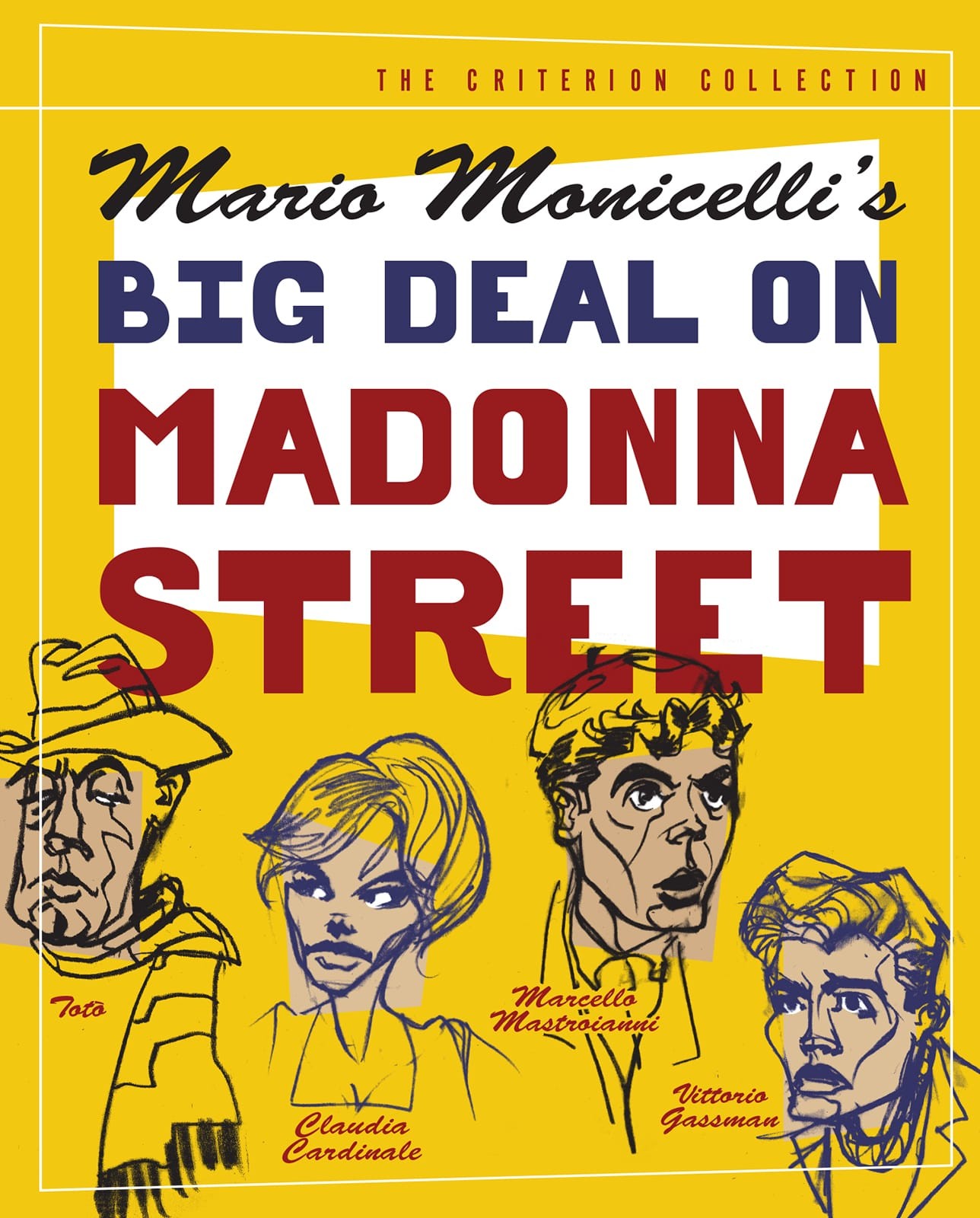
“It’s such a wonderful custom,” said
Nicola. “I remember my grandmother and grandfather
taking a walk through the neighborhood each night
like that. Maybe
some of the old-timers still do, but it’s pretty
much disappeared where I live.”
Giancarlo looked at his watch and said,
“Okay, it’s half past seven. Paper Moon just
opened. Shall we go?”
The two of them got to the restaurant and,
to Nicola’s delight, she was recognized by the
staff. “Ah,
Signorina Santini, una tavola per due?”
“Si,
Michaele,” she answered, as the two young people
were shown to a very nice table up front, sitting
under a movie photo of Robert De Niro in “The
Godfather II.”
Somewhere a photo of Claudia Cardinale was
smiling.
“Hm, you seem to be known by everyone in
Milan,” said Giancarlo. “Is that all since the
show?”
“Just a little. My friends and I go here a
lot.”
Giancarlo
laughed. “Ah, now I remember. When I
was in school at Yale, all the students, including
me, would go out to a pizzeria or have them
delivered to our rooms. I loved that! And the
pizzas were so large and with so many ingredients,
you could share one pizza with four people.”
Giancarlo was alluding to what Nicola had
found out on her first visit to Paper Moon, that
pizzas in Italy were sized for a single person,
just the diameter of a dinner plate, and that
everyone cut their pizza with a knife and fork
instead of folding it and eating it with one’s
fingers, as was the case back home.
The couple ordered two different pizzas
they would share and a bottle of good Chianti.
“With pizza you should always drink Chianti,” said
Giancarlo. “At
least that’s what I learned in New York.”
“And the reason for that is that Chianti is
usually the only red wine they offer in
pizzerias,” Nicola said. “Which is odd, because
the first pizzas originally came from Naples.”
“Really?”
Nicola then launched into a brief history
of the Neapolitan pizza, how the tomato had come
to Italy from America and how only poor people in
Naples ate them.
She told how it was street food, but in
1889, a local pizza maker named Raffaele Esposito
created a special pizza for the visit of King
Umberto I’s consort, Queen Margherita, to the
city. The
enterprising pizzaiolo made his creation with
white mozzarella, red tomato and green basil—the
colors of the new Italian national flag—and
christened it pizza alla
Margherita.
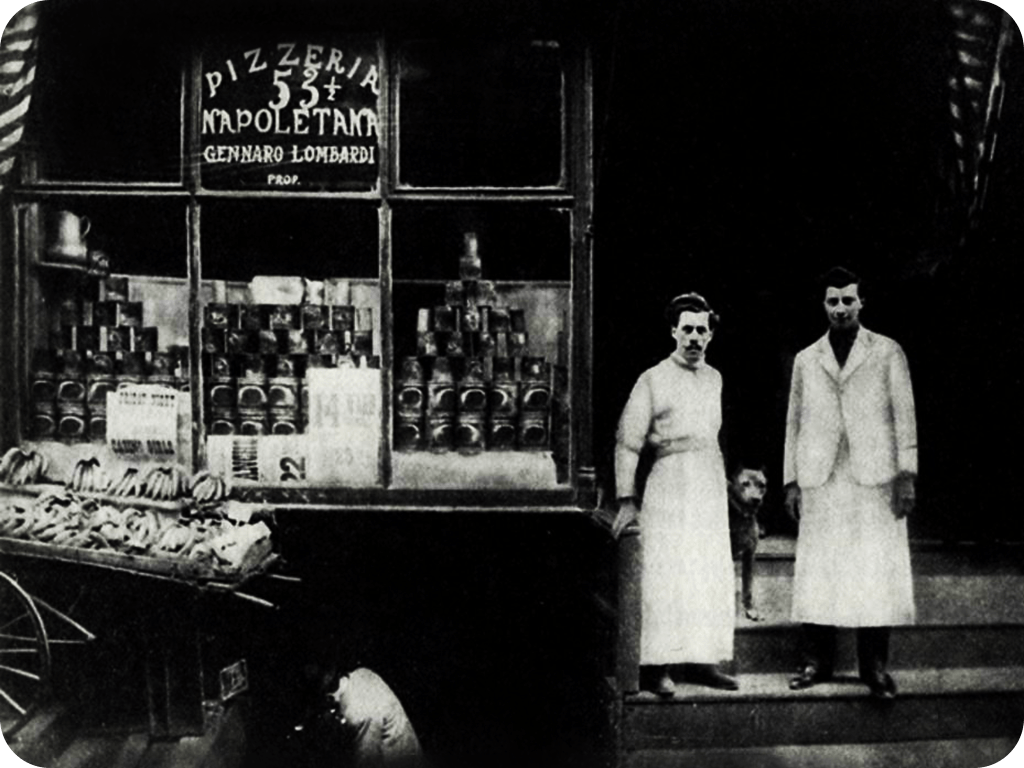 Giancarlo
looked stunned. “I never knew this story. When I
was in New York everybody said the pizza was
invented in New Haven.”
Giancarlo
looked stunned. “I never knew this story. When I
was in New York everybody said the pizza was
invented in New Haven.”
“Nonsense,” said Nicola. “What happened was
that when the Neapolitans came to the United
States, they brought the pizzeria with them. The
first one ever was in New York’s Greenwich
Village, a place called Lombardi’s (left). It
opened around 1905 and it’s still there.”
Giancarlo shook his head and said, “How do
you know so much about pizza?”
A little hesitant, Nicola cleared her
throat and said, “Well, everyone knows about pizza
in New York, my mother’s people are Neapolitan,
and I think I told you my older brother is manager
of the best pizzeria in the Bronx, which is called
Bella Napoli.”
All Giancarlo said was, “Interesting.”
The wine and the pizzas arrived and they
ate ravenously, cutting the pies in half and
exchanging each.
When they finished, Giancarlo ordered a
half-liter more of wine.
“I am so glad we didn’t wait to go to Al
Porto,” he said.
“Me too. This was perfect.”
Giancarlo put his hand on Nicola’s, this
time caressing it while looking into her dark
eyes. “So,” he said. “It’s only nine o’clock and
it’s Saturday night.
What do you think we should do now?”
Nicola knew exactly what she wanted to do
and that was not to return to her dorm. She just
shrugged as if to say, “Whatever you want to do.”
She might even have fluttered her eyelashes.
Still holding her hand, Giancarlo said, “We
could go to my hotel—it’s nearby—and have that digestiva
we didn’t have last night. I don’t think it will
compromise this Chianti too much.”
Nicola’s thoughts were racing, trying to
balance holding back against her fervid desire to
go to Giancarlo’s hotel. For a moment she was
quiet, her hand under his, her eyes never leaving
his. “I suppose ... that would be a wonderful way
to end the evening,” trying not to give too much
away in her response.
“Brava,
Nicolina.” It
was the first time Giancarlo had said her name as
an Italian diminutive. “I get the check and we
go.”
5 Reasons
Not To Age Wines
You Just Bought At The Store
By John Mariani
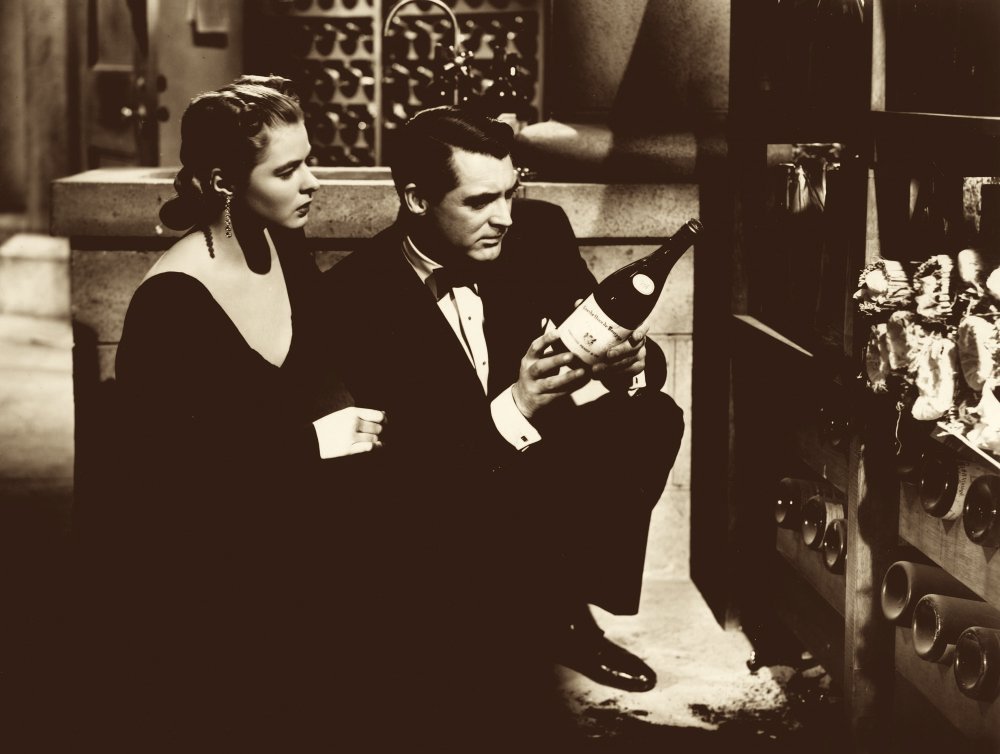
A
press release from Tuscan producer Villa Poggio
Salvi describes its new release from the 2015
vintage as “an absolutely gorgeous Brunello. The
aromatics are beautiful in this young Brunello,
expressive and open, showing striking nuances of
cherries, raspberries and currants ... On the
palate this possesses an elegant medium body,
with wonderful vibrancy and a remarkable
structure.”
I have not yet tasted this wine but I have
no reason to doubt most of what Villa Poggio Salvi
boasts about it. But in several ways the praise
puts into focus many questions about buying a wine
from a store, then sticking it away for the next
several years in the belief that it will actually
improve. And if it does, will it taste anything
like the “young Brunello” described? In five or
ten years will it retain “striking nuances” and
“medium body with wonderful vibrancy?” Or, as the
tannins soften will the flavors of oak from the
aging barrel alter all of those claims?
The assumption is that the wine producers,
some of whose estates may date back hundreds of
years, have a pretty good idea of how their wines
age and that therefore their advice should be
taken seriously. But here are some things to ask
yourself about buying any wine and storing it in
the hope that it has a brighter future.
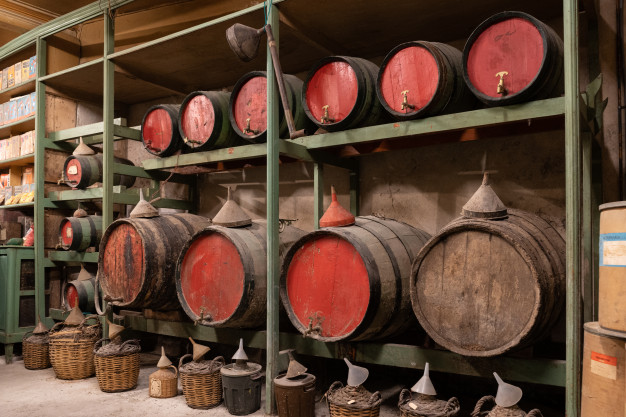 Q: Do all wines need further aging
once released to the market?
Q: Do all wines need further aging
once released to the market?
A: Not by a long shot. A conservative
estimate of wines ready to drink—in fact, made to
be drunk upon release—would be north of 95%. In
the whole history of wine, up until the 18th
century, when European noblemen could afford to
hold back certain red wines (rarely any whites),
wines were always drunk fresh. Wooden barrels
have been used since the Iron Age (8th to 5th
century BC), but for transport, not aging. For
long sea voyages the process of adding brandy to
stabilize wines like Port, Marsala and Madeira
began in the middle 18th century. Those and other
fortified wines never get any better once
bottled. Aging
was found to improve many red wines that began
with robust tannins and were adjudged to be of
very high quality to begin with, like the top
classified crus of Bordeaux. But not even the
French bought into the British preference for
wines aged for decades in damp cellars. Today,
long aging is still an iffy proposition, because
age does not always mean improvement. Last month I
uncorked a 50-year-old bottle of the illustrious
Château Cheval Blanc (despite its name, it’s red,
not white) that I’d kept under ideal conditions in
a temperature-controlled wine refrigerator. On
first sip, I found the wine undrinkable. On
another occasion some years ago, I tasted a 1929
Château Mouton-Rothschild that I found remarkable
for its vigor, but after ten minutes of oxygen
entering the wine, it was shot.
Q: Why do wine
producers release wines they believe need
further aging?
A: The simple answer is that they
have to sell each year’s vintage, and, after what
they deem an acceptable time in wood barrels, they
release them, perhaps saying on the label that
further aging is "recommended." But it would have
to be in cellars like theirs, which only they
have.
Q: Are producers
releasing their wines earlier than they used to?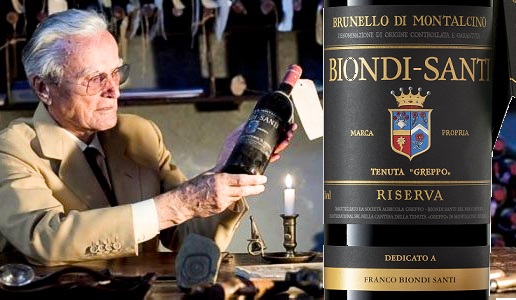
A: By and large, yes. Inventory is
key to any business, and wine producers now have
global markets to supply. Brunello di Montalcino
is a good case in point: Created by Ferruccio
Biondi-Santi from 100% Sangiovese Grosso in 1865,
only four vintages were even declared by the
estate up until the end of World War II—1888,
1891, 1925 and 1945. By the 1960s there were only
eleven producers; now there are more than 200,
turning out oceans of a wine once barely known
outside of Tuscany. The older producers seemed in
no rush to release their limited quantities of
Brunello and contended that the Sangiovese Grosso
needed a long aging in big barrels. (Back in the
1970s I tasted a Biondi-Santi bottling from 1888
at their estate that was absolutely delicious.)
But this expansion of so many producers has
completely changed the character of Brunello to a
medium-bodied red wine that rarely shows the same
characteristics of the old style. So, a 2015
release is definitely ready to drink; age may
improve the wine, but no one really can say.
Q: Do you really
need a temperature-controlled “cellar” to age
wines?
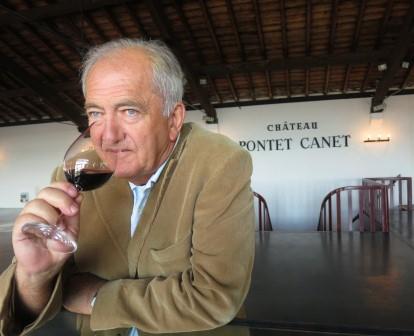 A: To an
extent, yes. You do not want to store your wines
in a house or apartment closet that might be 80
degrees in summer, though cold doesn’t bother
them. The ideal is 55 degrees, which would require
buying equipment. But a well-regarded producer of
Bordeaux, Alfred Tesseron of Château Pontet-Canet,
told me he accidentally left a case of his wine in
the bottom of his boat over the summer and winter,
rocking on the waves. He was sure the wine would
be ruined, but he said it was entirely unaffected
and he drank it with pleasure.
A: To an
extent, yes. You do not want to store your wines
in a house or apartment closet that might be 80
degrees in summer, though cold doesn’t bother
them. The ideal is 55 degrees, which would require
buying equipment. But a well-regarded producer of
Bordeaux, Alfred Tesseron of Château Pontet-Canet,
told me he accidentally left a case of his wine in
the bottom of his boat over the summer and winter,
rocking on the waves. He was sure the wine would
be ruined, but he said it was entirely unaffected
and he drank it with pleasure.
Q: What about
white wines and Champagnes?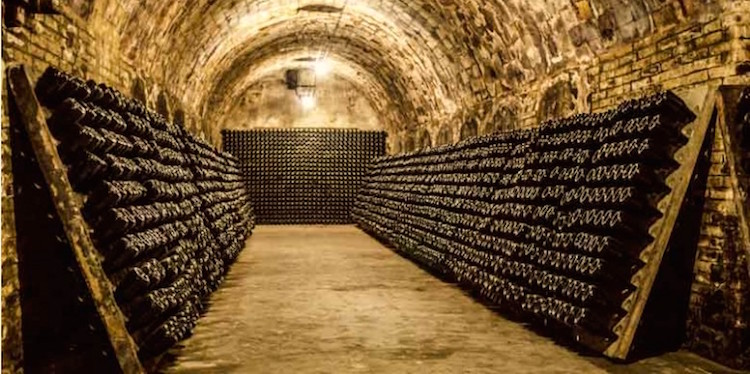
A: Both will change flavor as they age, but in terms of still white wines, only the very greatest Burgundies, like Domaine de la Romanée-Conti Montrachet and Corton Grand Cru, will taste better (probably) after ten years. It is very rare when a California Chardonnay tastes better years after release. The finer Champagne houses release their bottlings when they feel they are ready to drink—the region produces 300 million bottles each year and, during the coronavirus crisis, sales have been way down. But some people, especially the British, like their Champagnes to develop a patina of age that begins to taste slightly oxidized. Most people who love Champagne are probably not going to wait after buying a bottle if, especially these days, a good reason to celebrate comes up.
Sponsored by

Any of John Mariani's books below may be ordered from amazon.com.
 The Hound in Heaven
(21st Century Lion Books) is a novella, and
for anyone who loves dogs, Christmas, romance,
inspiration, even the supernatural, I hope you'll find
this to be a treasured favorite. The story
concerns how, after a New England teacher, his wife and
their two daughters adopt a stray puppy found in their
barn in northern Maine, their lives seem full of promise.
But when tragedy strikes, their wonderful dog Lazarus and
the spirit of Christmas are the only things that may bring
his master back from the edge of despair.
The Hound in Heaven
(21st Century Lion Books) is a novella, and
for anyone who loves dogs, Christmas, romance,
inspiration, even the supernatural, I hope you'll find
this to be a treasured favorite. The story
concerns how, after a New England teacher, his wife and
their two daughters adopt a stray puppy found in their
barn in northern Maine, their lives seem full of promise.
But when tragedy strikes, their wonderful dog Lazarus and
the spirit of Christmas are the only things that may bring
his master back from the edge of despair. WATCH THE VIDEO!
“What a huge surprise turn this story took! I was completely stunned! I truly enjoyed this book and its message.” – Actress Ali MacGraw
“He had me at Page One. The amount of heart, human insight, soul searching, and deft literary strength that John Mariani pours into this airtight novella is vertigo-inducing. Perhaps ‘wow’ would be the best comment.” – James Dalessandro, author of Bohemian Heart and 1906.
“John Mariani’s Hound in Heaven starts with a well-painted portrayal of an American family, along with the requisite dog. A surprise event flips the action of the novel and captures us for a voyage leading to a hopeful and heart-warming message. A page turning, one sitting read, it’s the perfect antidote for the winter and promotion of holiday celebration.” – Ann Pearlman, author of The Christmas Cookie Club and A Gift for my Sister.
“John Mariani’s concise, achingly beautiful novella pulls a literary rabbit out of a hat – a mash-up of the cosmic and the intimate, the tragic and the heart-warming – a Christmas tale for all ages, and all faiths. Read it to your children, read it to yourself… but read it. Early and often. Highly recommended.” – Jay Bonansinga, New York Times bestselling author of Pinkerton’s War, The Sinking of The Eastland, and The Walking Dead: The Road To Woodbury.
“Amazing things happen when you open your heart to an animal. The Hound in Heaven delivers a powerful story of healing that is forged in the spiritual relationship between a man and his best friend. The book brings a message of hope that can enrich our images of family, love, and loss.” – Dr. Barbara Royal, author of The Royal Treatment.
 |
The Encyclopedia of American Food and Drink by John F. Mariani (Bloomsbury USA, $35) Modesty forbids me to praise my own new book, but let me proudly say that it is an extensive revision of the 4th edition that appeared more than a decade ago, before locavores, molecular cuisine, modernist cuisine, the Food Network and so much more, now included. Word origins have been completely updated, as have per capita consumption and production stats. Most important, for the first time since publication in the 1980s, the book includes more than 100 biographies of Americans who have changed the way we cook, eat and drink -- from Fannie Farmer and Julia Child to Robert Mondavi and Thomas Keller. "This book is amazing! It has entries for everything from `abalone' to `zwieback,' plus more than 500 recipes for classic American dishes and drinks."--Devra First, The Boston Globe. "Much needed in any kitchen library."--Bon Appetit. |
"Eating Italian will never be the same after reading John Mariani's entertaining and savory gastronomical history of the cuisine of Italy and how it won over appetites worldwide. . . . This book is such a tasteful narrative that it will literally make you hungry for Italian food and arouse your appetite for gastronomical history."--Don Oldenburg, USA Today. "Italian
restaurants--some good, some glitzy--far
outnumber their French rivals. Many of
these establishments are zestfully described
in How Italian Food Conquered the World, an
entertaining and fact-filled chronicle by
food-and-wine correspondent John F.
Mariani."--Aram Bakshian Jr., Wall Street
Journal.
"Equal parts
history, sociology, gastronomy, and just
plain fun, How Italian Food Conquered the
World tells the captivating and delicious
story of the (let's face it) everybody's
favorite cuisine with clarity, verve and
more than one surprise."--Colman Andrews,
editorial director of The Daily
Meal.com. "A fantastic and fascinating
read, covering everything from the influence
of Venice's spice trade to the impact of
Italian immigrants in America and the
evolution of alta cucina. This book will
serve as a terrific resource to anyone
interested in the real story of Italian
food."--Mary Ann Esposito, host of PBS-TV's
Ciao
Italia. "John Mariani has written the
definitive history of how Italians won their
way into our hearts, minds, and
stomachs. It's a story of pleasure over
pomp and taste over technique."--Danny Meyer,
owner of NYC restaurants Union Square
Cafe, The Modern, and Maialino.
|
 |
 |
 |
 |
 |
 |
 |
 |
 Everett Potter's Travel Report:
Everett Potter's Travel Report: 
 Eating Las Vegas
JOHN CURTAS has been covering the Las Vegas
food and restaurant scene since 1995. He is
the co-author of EATING LAS VEGAS – The 50
Essential Restaurants (as well as
the author of the Eating Las Vegas web site: www.eatinglasvegas.
He can also be seen every Friday morning as
the “resident foodie” for Wake Up With the
Wagners on KSNV TV (NBC) Channel 3 in
Las Vegas.
Eating Las Vegas
JOHN CURTAS has been covering the Las Vegas
food and restaurant scene since 1995. He is
the co-author of EATING LAS VEGAS – The 50
Essential Restaurants (as well as
the author of the Eating Las Vegas web site: www.eatinglasvegas.
He can also be seen every Friday morning as
the “resident foodie” for Wake Up With the
Wagners on KSNV TV (NBC) Channel 3 in
Las Vegas.
MARIANI'S VIRTUAL GOURMET
NEWSLETTER is published weekly. Publisher: John Mariani. Editor: Walter Bagley. Contributing Writers: Christopher Mariani,
Robert Mariani, Misha Mariani, John A. Curtas, Gerry Dawes, Geoff Kalish,
and Brian Freedman. Contributing
Photographer: Galina Dargery. Technical
Advisor: Gerry
McLoughlin.
If you wish to subscribe to this
newsletter, please click here: http://www.johnmariani.com/subscribe/index.html
© copyright John Mariani 2020

